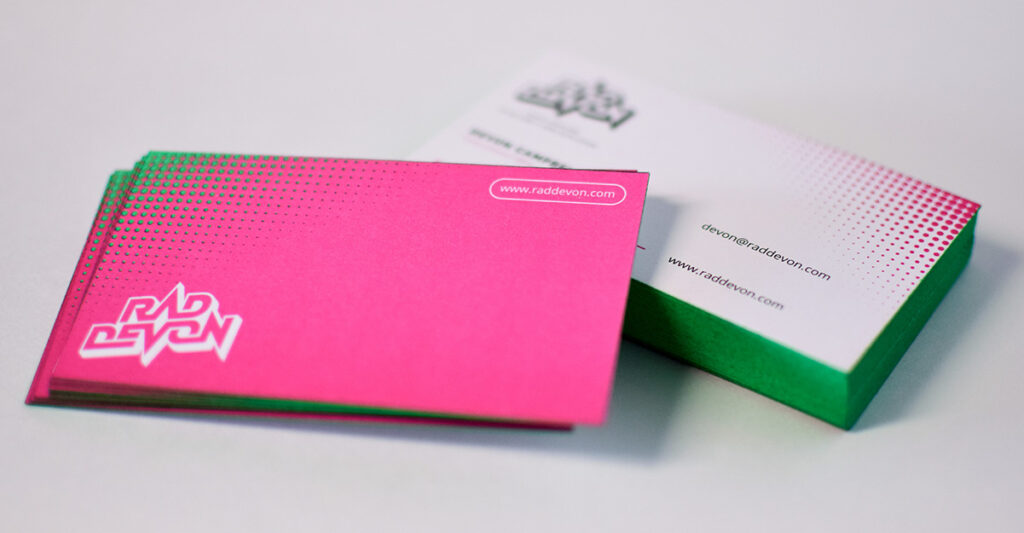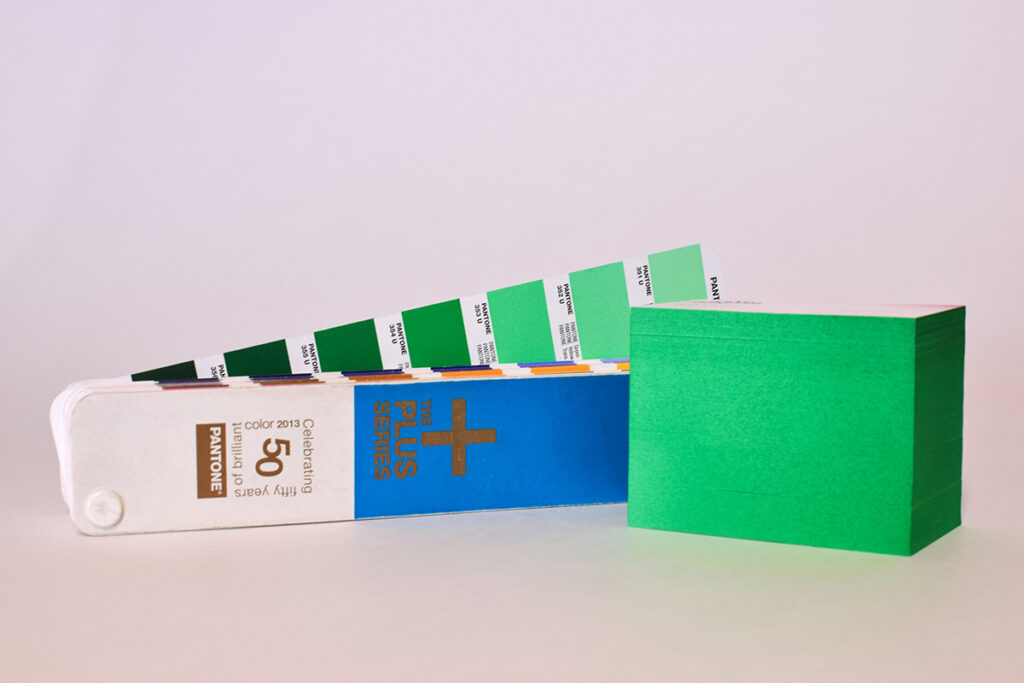Devon called with a few questions about his business card idea. He had a sharp and vibrant design that matched his website, but he was concerned the colors in print wouldn’t be as bright as they appeared on screen. His concerns were valid: most colors printed CMYK don’t look as vibrant as their RGB equivalent on a computer screen. You can get bright & vibrant colors in print, but you might need to use spot colors. If he uploaded it to moo.com, he would have received a well-printed card that wouldn’t have matched his expectations. Moo.com does a great job, but everything’s printed in CMYK (and limited to a CMYK gamut).

He didn’t have any existing print media, so it was up to us to match colors. This was a simple enough process: hold a Pantone swatch book up to a computer screen and see what looks best, then roll a dab of that ink onto a piece of cardstock and mail it to him (in technical terms, this physical ink swatch is called a draw down).

We settled on Pantone 352 and Rhodamine Red—a fuchsia-like red that’s one of the Pantone base colors.

For the painted edges, we airbrushed a heat-set acrylic paint. It’s important the paper doesn’t soak up too much water or you can damage the card. Heat-set acrylic sprays just enough pigment without getting the cards excessively wet. We build up multiple layers gradually to achieve the right saturation. The cards have to be trimmed neatly (using a clean, freshly-sharpened blade so there’s no paper dust), clamped in stacks to prevent overspray, painted, then heated gently to cure (just enough to dry the paint, but not enough to warp the card). We worked in batches, edge-painting about 200 at a time (out of 1000 total). Building up multiple layers and touching up where needed insured the cards’ edges were evenly shaded throughout the whole run.

It’s easy to take orders and react with “what’s the fastest/easiest way to print this?” And sometimes that’s exactly what customers want: a $50 box of business cards printed digitally on house stock. And they work great; we’re proud to offer those.
But every once in a while a design comes across our desks that forces us to think “what’s the best way to do this?” As local printers, we see those types of files more often than your typical online printer. And that’s a good place for a printer to be.
To learn more about Devon and his business, you can visit raddevon.com